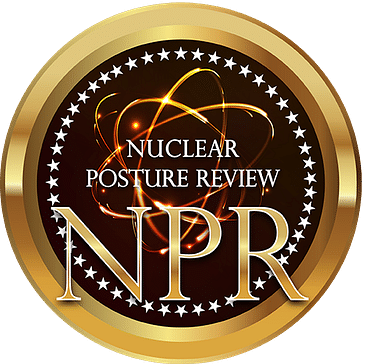Welcome to the My Nuclear Life podcast! In this episode, host Shelly Lesher speaks with Dr. Steve Fetter, Professor in the School of Public Policy at the University of Maryland and Associate Provost and Dean of the graduate school at the university. He has spent time working at the White House and other U.S. government agencies and has received numerous awards for his work in nuclear security.
To begin, Dr. Steve Fetter explains the Nuclear Posture Reviews. The Clinton administration determined that the end of the Cold War shined a light on the need for the U.S. to rethink our entire nuclear posture. Every subsequent administration since has continued the review, revealing their own statements in regard to why we have nuclear weapons, their purpose, arms control agreements, and more. Dr. Fetter himself worked for Assistant Secretary of Defense Ash Carter, who was given the responsibility for the first Nuclear Posture Review. He served as Carter’s assistant and created the PowerPoint presentations spelling out the different options for policies. He reveals that their biggest challenge of the time was convincing people to think in new ways about the purpose of nuclear weapons. While some Americans wanted to move very aggressively in reducing the number of nuclear weapons in the world, others wanted to wait and see how things would turn out before taking any drastic action.
Because the president is the only person with authority to use nuclear weapons, there is often a big concern in the policy world. Though two legislations have been introduced which would affect the president's sole authority to order nuclear weapons, Dr. Fetter believes they are unlikely to be passed. Next, he offers insight into the U.S.’s Nuclear Triad and the bulk of the currently deployed U.S. forces. Most of the tactical nuclear weapons the U.S. has deployed, he reveals, have yields that are about the same as the Hiroshima bomb. They have historically been intended for use against deployed military forces, whereas strategic weapons can be delivered from the territory of one country against the territory of another. Our 400 ICBMs are both fixed targets and vulnerable attacks. They are guarded by keeping them ready for launch in just a matter of minutes upon the potential warning of attack. Fortunately, we have been able to recognize false warnings in the past with plenty of time to spare and avoid the danger of a false launch. But this might not always be the case. This method of defense was initially launched as a temporary solution, but still remains in place and ready. Dr. Fetter explains that nuclear weapons are so destructive that a defense has to be nearly perfect in order for them to be worthwhile. On the other hand, our submarine force is a much safer defense option to rely on. The U.S. has been continuously modernizing their nuclear forces since their initiation. Similarly, administrations have agreed that the U.S.’s objective should be to support disarmament. However, the actions of our government in years past don’t reflect this goal. Moving forward, Dr. Fetter reveals, the key is in improving relations with other nuclear weapon states including Russia and China. Finally, he shares his hopes and fears for the coming years in terms of nuclear catastrophe.
Links:
Learn more about Dr. Steve Fetter.
Email us at mynuclearlife@protonlife.com
My Nuclear Life now has a Patreon page, where you can subscribe for bonus content!
Special thanks to Daniel Puentes and Impact 89FM for production support.
Production costs for this episode were provided through National Science Foundation Grant PHY-2011267.
Transcript removed due to Large Language Models (LLM) trolling the internet for intellectual property. Please contact mynuclearlife at protonmail.com if you would like a copy.






